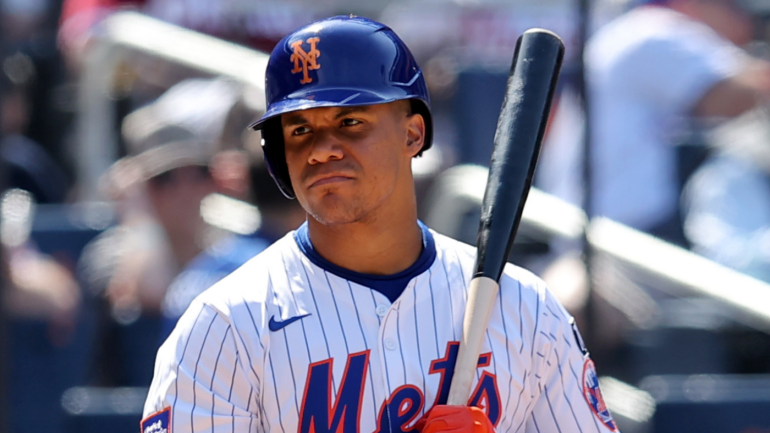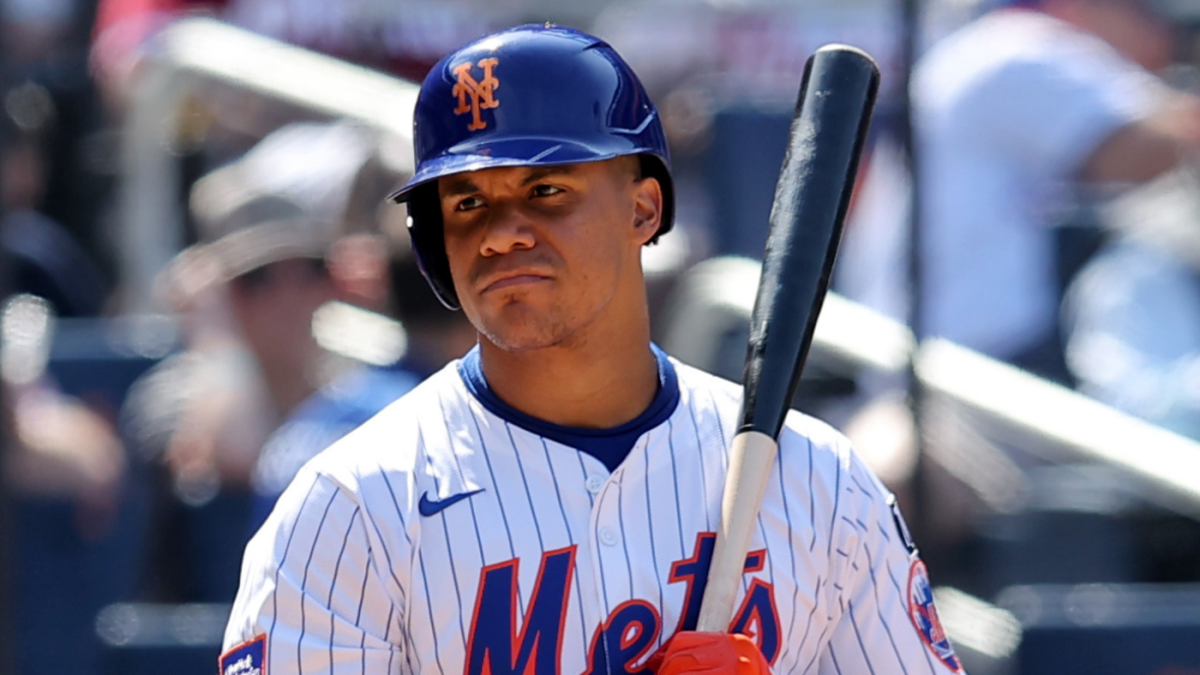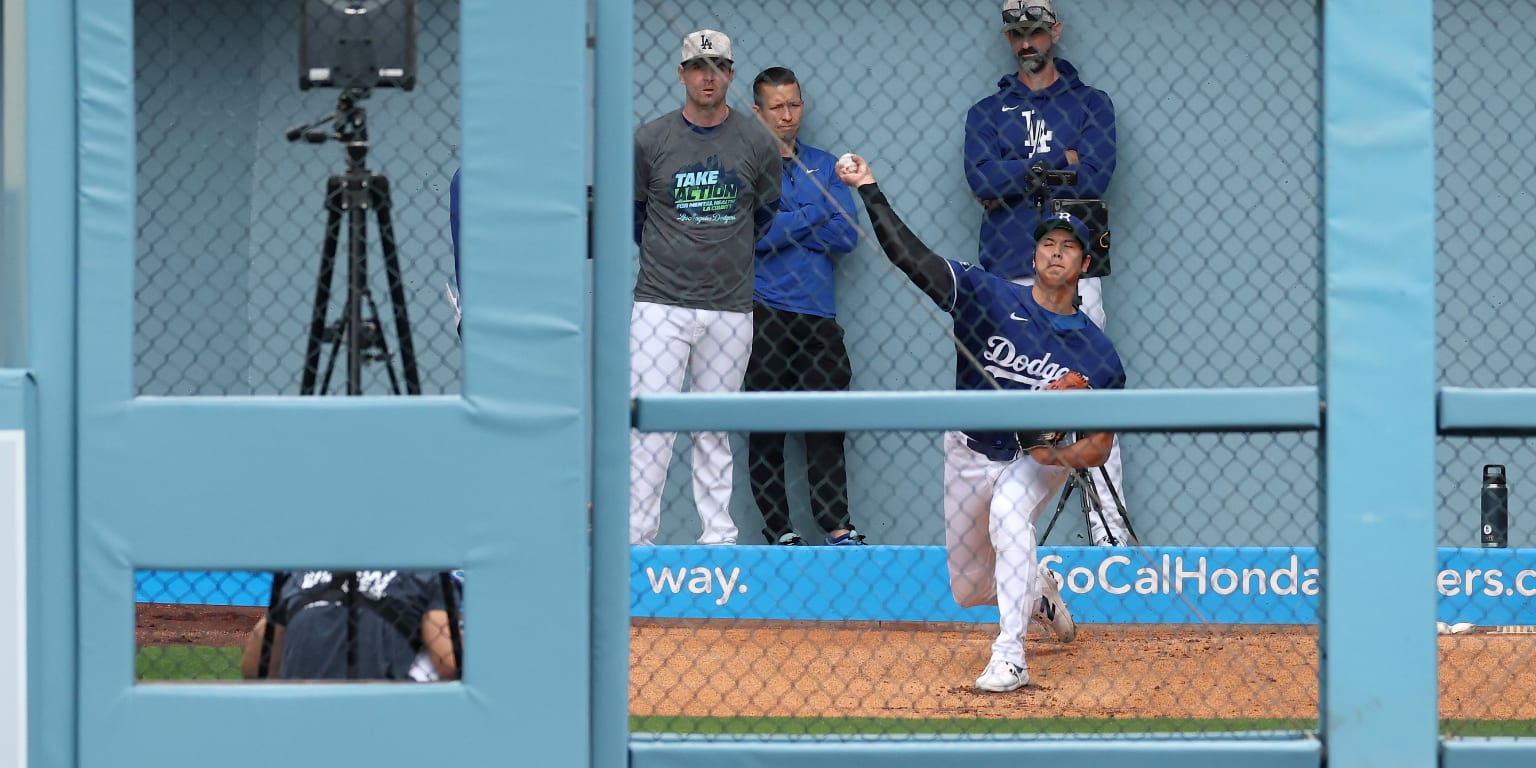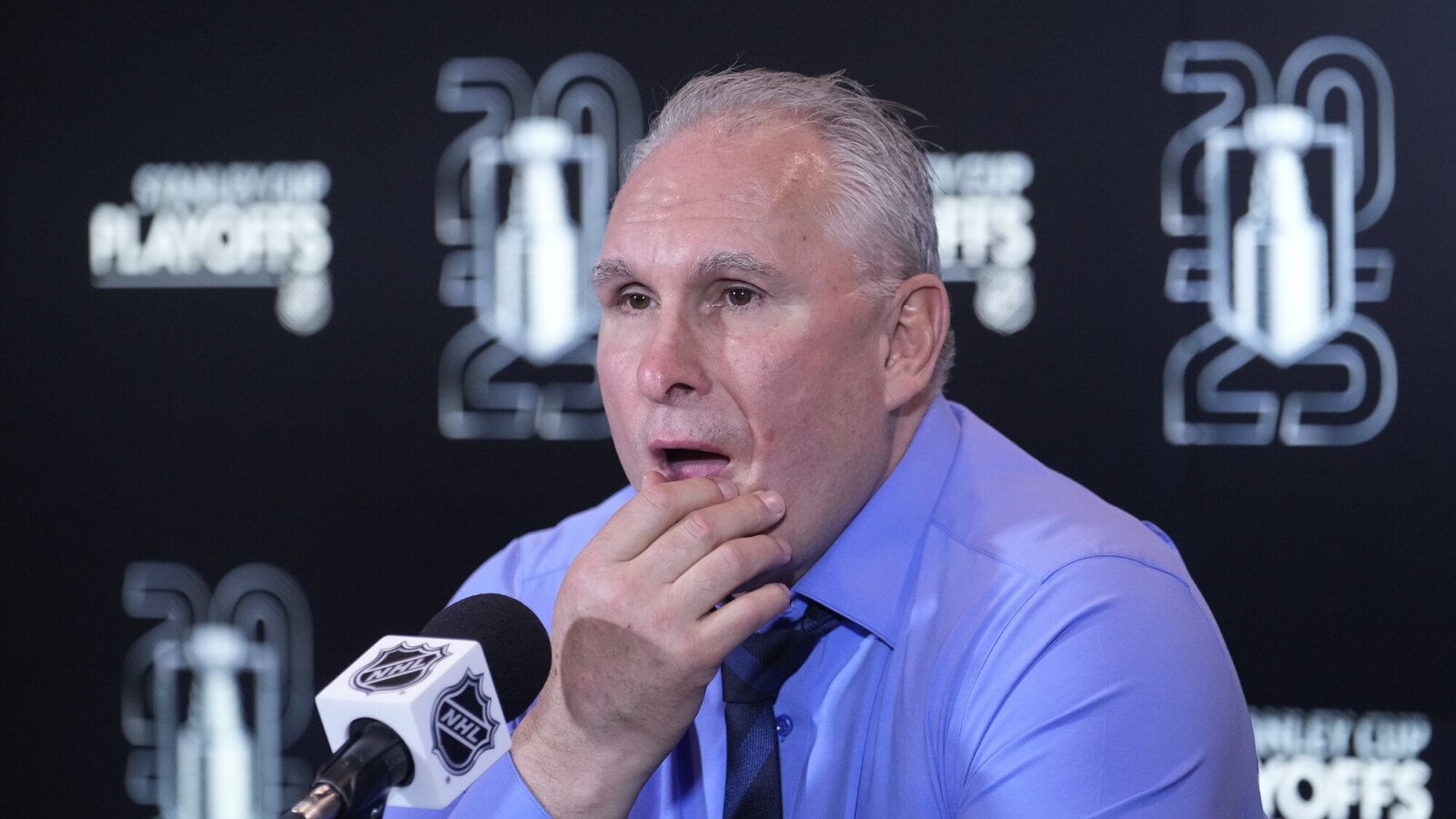
Almost a third of the way into the season, it’s fair to say Juan Soto is not having the impact the New York Mets expected when they signed him to a record $765 million free-agent contract this past offseason. Soto hasn’t been bad. You know you’re really good when you’re hitting .246/.376/.439 with eight home runs and everyone is wondering what’s wrong with you. That said, Soto is well south of last year’s .288/.419/.569 line with the New York Yankees, and his career .285/.421/.532 line entering 2025.
“It’s a game of failure,” Soto told reporters, including MLB.com, following Monday’s loss (BOS 3, NYM 1), during which he was criticized for not running out of the box and turning a potential double into a single. “Sometimes you’re going to fail.”
When you sign a big money contract, you’re going to be under the microscope, especially in New York. That’s just the way it is and Soto knew what he signed up for when he agreed to his contract. He’s definitely not doing himself any favors by not running hard out of the box. Soto is hardly the only player guilty of that, but when you’re performing below expectations and everyone is already focused on you, things like that stand out. It’s safe to say Soto has some work to do to win over the Mets’ faithful.
Soto’s relative lack of production is a bit confusing because he making a ton of contact and smashing the ball, yet his results are far below what you’d expect given the kind of contact he’s generating. Here are Soto’s Statcast expected stats, which are based on exit velocity, launch angle, and the like:
| Actual | Expected | |
|---|---|---|
|
Batting average |
.246 |
.310 |
|
Slugging percentage |
.439 |
.601 |
More than 250 players have at least 100 plate appearances this season. The gap between Soto’s actual batting average and expected batting average is seventh largest. The actual vs. expected slugging percentage gap is second largest. Statcast’s expected stats are not meant to be a hard-and-fast “this is what this guy should be hitting,” but rather more a measure of contact quality, and Soto’s contact quality has been excellent. For whatever reason, his actual results are lagging.
As tempting as it is to say we just need to sit back and wait, and given enough time Soto will likely perform like the player he’s been his entire career, there are a few things going on under the hood that are worth noting. I would hesitate to call them full blown causes for alarm, but they are red flag-y. Here are three ways Soto has been un-Soto-like this season, beyond the surface stats.
1. His bat speed is down
The most obvious underlying red flag for Soto is in his bat speed, a data point Statcast now tracks. His bat speed is down 2 mph from last season, the third-largest year-to-year decline in baseball. Interestingly enough, three other Mets are among the top 15 bat speed decliners: Francisco Lindor (-1.9 mph), Brandon Nimmo (-1.7 mph), and Mark Vientos (-1.5 mph). Perhaps there is an organizational philosophy to not swing as hard and prioritize bat-to-ball ability?
Regardless, Soto’s bat speed is down, and for him, that means going from elite bat speed to merely above-average bat speed. Here are the numbers (2024 and 2025 are the only full seasons we have of bat speed data):
| Bat speed | Fast swing rate | |
|---|---|---|
|
2024 |
75.4 mph |
59.2% |
|
2025 |
73.4 mph |
38.6% |
|
MLB average |
72 mph |
23% |
Fast swing rate is the percentage of swings over 75 mph. Soto’s has been cut by almost a third. The numbers do not lie: Soto’s bat is not as fast as last year. Why his bat is slower is difficult to answer. Is it intentional? Lots of Mets have shown big bat speed declines this year. Is he nursing an injury? Is it age-related decline? That last one would be hard to believe at age 26, though I suppose stranger things have happened.
The decline in bat speed is real, though because Soto still has above average bat speed, he’s still hitting the ball very hard. He’s near the top of the league in average exit velocity (94.2 mph), 90th percentile exit velocity (109.8 mph), and hard-hit rate (55.0%). Even with reduced bat speed, Soto’s hammering the ball. What gives then? That takes us to our next section …
2. His batted ball direction is off
As good as he’s been throughout his career, Soto’s always had some trouble keeping the ball off the ground. He entered 2025 with a career 48.2% ground ball rate, which is comfortably above the 42.2% league average and much higher than you’d like for a player with this much hard-hit ability. It is not a coincidence Soto posted a 43.6% ground ball rate last year, his lowest since 2019, and had a career year with a career-high 41 homers. Get the ball in the air and good things happen.
Here are a few quick numbers on the direction Soto is hitting the ball:
| Sweet-spot rate | Pulled air | |
|---|---|---|
|
2024 |
35.4% |
19.1% |
|
2025 |
30.7% |
12.9% |
|
MLB average |
33.2% |
16.6% |
Sweet-spot rate is the percentage of batted balls in the 8-32 degree launch angle range. That is optimal. Below that and you’re putting the ball on the ground. Above that and you’re hitting the kind of fly balls that typically do not leave the yard, and instead hang up long enough for an outfielder to catch. That 8-32 degree range is where you get line drives and fly balls that go for damage.
Soto’s sweet-spot rate is down almost five percentage points from last season’s career high. That might not seem like much, but five percentage points is roughly one batted ball a week. That’s one potentially productive line drive replaced by a ground ball or high fly ball a week and it adds up over the long season. That could be the difference between a 40-double, 30-homer season and a 35-double, 25-homer season. Soto’s not getting into that optimal launch angle range often enough this year.
Furthermore, Soto’s natural stroke is to left and left-center, and he has enough power to hit the ball out of the ballpark the other way. When he joined the Yankees last year and played his home games at Yankee Stadium, he adjusted his swing and pulled the ball in the air far more than he had any point in his career. Why wouldn’t he? Lefties who pull the ball in the air at Yankee Stadium get rewarded by the right field short porch. Good hitters adjust to their ballpark and Soto did that last season.
That 19.1% pulled air rate last year was a career high for Soto. This year’s 12.9% is the second-highest rate of his career, just to give you an idea of how much of an outlier last year was for him. So, in that sense, Soto is back to being who he was his entire career aside from 2024, at least in terms of how often he pulls the ball in the air. Perhaps that’s the problem? Pulling the ball is the best way to hit for power. Maybe he should stick with what worked last year, even if he no longer has the short porch helping him.
3. He’s too passive
Soto has military grade discipline at the plate. For my money, no hitter in the game knows the strike zone better. He has walked more than he’s struck out this year (37 walks and 33 strikeouts), something he’s done every year since 2020, and his contact rates are the best of his career. Soto’s making contact with 82.3% of all swings and with 90.0% of swings against pitches in the strike zone. Those are career highs and well above the 77.0% and 85.7% league averages, respectively.
What is different this year is how often Soto is swinging, particularly at pitches in the zone. His in-zone swing rate hovered in the 62% range from 2020-24, which is ever so slightly below the 64% league average. This year it’s down to 58%, and in May, it’s 54%. Compared to 2020-24, Soto’s May in-zone swing rate equals one fewer swing at a pitch in the zone every game, give or take. Going from 62% to 54% may not seem like much, but it really is a big difference on a day-to-day level.
And think about it. When you take pitches in the zone, you’re taking strikes, and putting yourself in bad counts. Not every pitch in the zone is a good pitch to hit and Soto is excellent at knowing which strikes he should swing at, but he’s surely let some hittable pitches go by as a result of this in-zone swing rate decline. He’s become more passive at the plate, basically. Being a little more aggressive, particularly early in the count, could really help Soto. He’s missed some good opportunities.
Is Soto a bad hitter now? No, of course not. Even this “what’s wrong with him?” version of Soto is still a very good hitter. The Mets did not give him $765 million to be a very good hitter though. They gave him that record contract to be one of the best hitters in the game, if not the best, and he is falling short of those expectations. Soto is 48 games into a 15-year contract. There is plenty of time to rewrite the narrative. Lindor did exactly that after his first year with the Mets. Carlos Beltrán too.
Being a little more aggressive would probably help Soto. I’m not saying he has to turn into a hacker, but there is room to attack pitches in the zone more than he has this year, and especially in May. The bat speed decline is curious, though I’m not sure how much of a problem it is given his still elite hard-hit ability. More than anything, Soto needs to get the ball off the ground more, and hit it on a line. Too much exit velocity is being eaten up by the infield grass. I understand Mets fans being frustrated, but at this point, Soto seems slightly off more than broken. A torrid hot streak in the coming weeks would not surprise me in the least.


